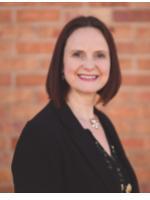

Sending Out an SOS |
Explore and create : Creation lab
Anna Sexton Jean Yang
Explore creative instructional strategies that integrate technology in meaningful ways. Participants will begin by defining engagement versus an engaged learner, then experience a model lesson integrating the strategies. Time is built in to discuss and align the strategies to online tools and resources with their current learning outcomes.
| Audience: | Coaches, Teachers, Technology coordinators/facilitators |
| Skill level: | Intermediate |
| Attendee devices: | Devices required |
| Attendee device specification: | Smartphone: Android, iOS, Windows Laptop: Chromebook, Mac, PC Tablet: Android, iOS, Windows |
| Participant accounts, software and other materials: | Preferred- Google Account with access to google products. Ability to download and install apps on smart devices. |
| Topic: | Reimagining learning |
| Grade level: | 6-12 |
| Subject area: | Language arts, Social studies |
| ISTE Standards: | For Coaches: Teaching, Learning and Assessments
Designer
|
By the end of the sessions, participants will:
1) have a working definition of an engaged learner,
2) experience a model lesson utilizing a variety of creative instructional strategies (including 3 to 1 summary, make it concrete, jigsaw, digital paper slides, and xo let’s go) and align instructional strategies to digital tools and resources (with examples provided - YouTube, FlipGrid, Zoom whiteboard, Jamboard, Google Suite, Padlet, menti, socrative, and more),
3) brainstorm and curate a list of digital tools and resources they currently use in the classroom, and
4) leave with at least one lesson idea, strategy and tool they can take back to their own classroom.
Participants will:
Introduction, Norms and Agenda (5min) - provide an overview of the objectives, norms and activities for the session.
Hook (10min) - 3-1 summary - this strategy will be used in the hook activity to help generate the working definition of engagement / engaged learner.
participants will start by writing down a word/phrase that describes each image then combine their phrases to create a summary of what engagement looks like in the classroom.
Explore (25min) - participants will continue to experience a model lesson incorporating a variety of creative instructional strategies:
10 min- Individual activity (make it concrete): participants will use a digital place mat as a guided notes strategy to gain a deeper understanding of what engagement looks like in asynchronous and synchronous learning environments.
15 min- Small group (jigsaw / digital paper slides): participants will experience a digital breakout room using Jamboard to collaborate on a jigsaw activity to explain their findings. The presentation will include ideas and suggestions for successful integration of digital tools and resources. The group will post a link to their final presentation on Padlet.
Alignment / Application (10min) - pair up for a fun F2F, with a digital option (tic tac toe board). to give and get an idea they learned in the session.
Evaluate / Closure (5min) - wrap up and provide a summary of learning objectives for the session. Provide a link to the presentation and evaluation.
My presentations follow my doctoral studies and research on creating professional development that increases technology self-efficacy.
Through modeling, practice and reflection participants will gain a deeper understanding of how to select, align, and use technology to meet specific learning outcomes.
Sexton, A. (2019). Examining the effects of modeling, practice, and reflection in technology professional development. Dissertations & Theses @ UOP.

